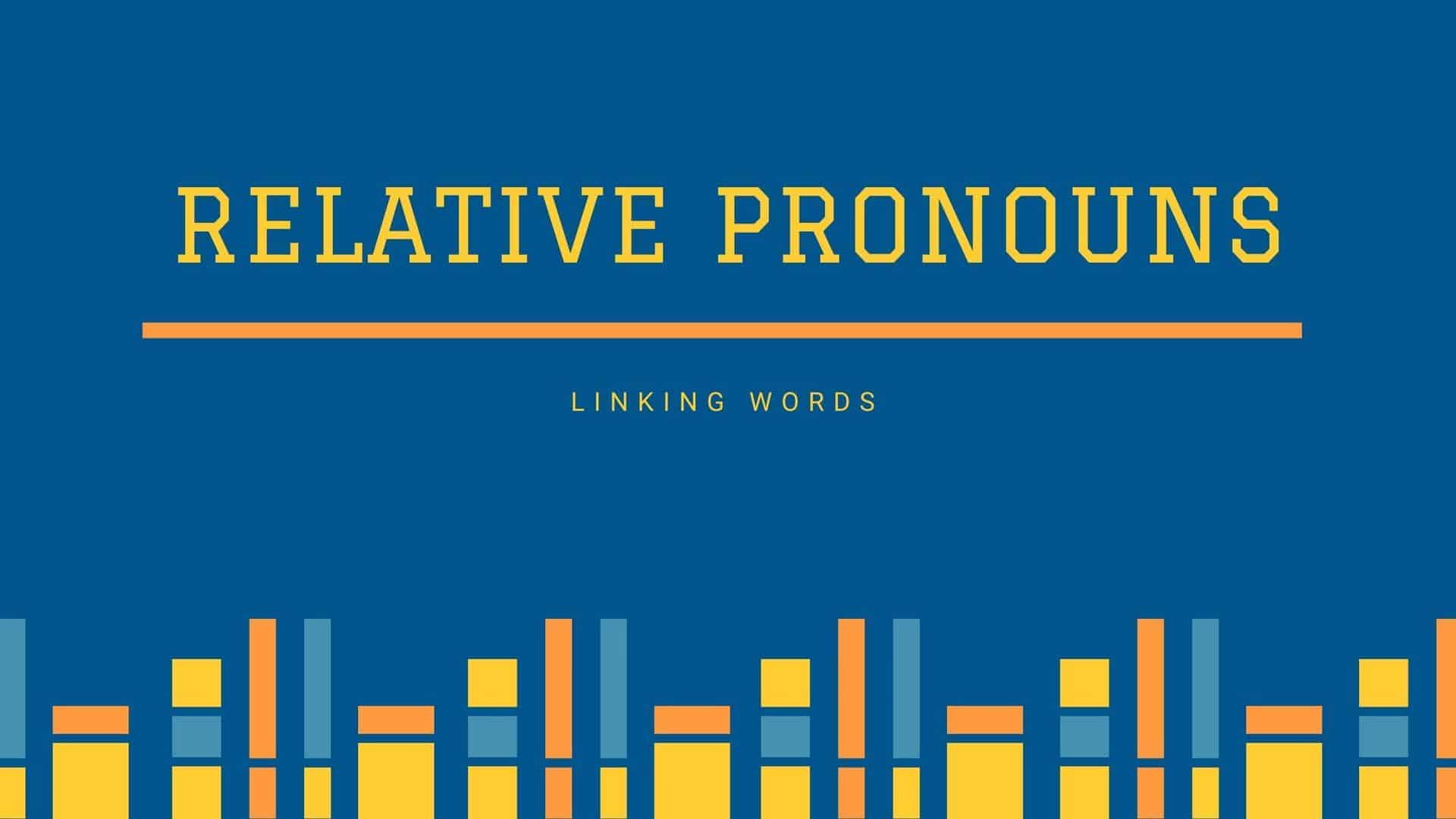What is a Relative Pronoun?
A Relative Pronoun is a pronoun that introduces two types of clauses, namely, a relative clause/ adjective clause and a noun clause. The commonly used Relative Pronouns are which, that, who, whose, and whom. “Whoever”, “when,” “whichever”, “whosoever”, whomever”, “wherever”, “whatever”, “whatsoever “, and “where” are also sometimes used as Relative Pronouns.
Functions of the relative pronoun
A Relative Pronoun can function as a subject, an object, or a possessive pronoun in a relative clause. It is to be mentioned here that “whose” is the only possessive relative pronoun.
The usage of a relative pronoun depends on its antecedent and also the relative clause it introduces.
1. Relative pronoun in relative clause
Relative Pronoun as Subject
“That,” “which,” and “who” are the Relative Pronouns that function as the subjects of the relative clauses
When the antecedent is a person, the relative pronoun used as subject is “who”. The relative pronoun “which” is used when the antecedent is a thing. The relative pronoun , “that”, is used for both person and thing .
Example:
- The girl who is sitting next to your sister is my friend’s fiancée.
In the above sentence, the antecedent is “the girl”.(person). So the relative pronoun used is “who” which is the subject of the relative clause,” who is sitting next to your sister”
- He was showing some funny actions which attracted some children.
In the above sentence, “which” is the subject of the relative clause, “ which attracted some children”. The antecedent here is ” funny actions”, which is not a person.
- The boy could repair his cycle that was damaged in a minor accident.
In the above sentence, “that” is the subject of the relative clause, “that was damaged in a minor accident”. The antecedent of the relative pronoun, “that”, is “cycle”
Relative Pronoun as object
The Relative Pronouns commonly used as direct objects are “that,” ” which”, and “whom.”
- My daughter will wear the dress that I bought yesterday on her birthday.
In the above sentence, “that” is the relative pronoun. It introduces the relative clause “that I bought yesterday.” It is also the object of the relative clause. The antecedent of “that” is “the dress”.
- She passed the test that she took last month.
In the above sentence, “that” is the relative pronoun. It introduces the relative clause “that she took last month.” It is also the object of the relative clause. The antecedent of “that” is “the test”.
Relative Pronoun as possessive pronoun:
“Whose” is the only possessive relative pronoun.
Example:
- I gave some money to the poor boy whose purse was lost.
In the above sentence, “whose purse was lost” is the relative clause, introduced by the Relative possessive pronoun, “whose”.
2. Relative pronoun in Noun clause
As already mentioned above, relative pronouns are used to introduce noun clauses also.
Example:
- I could see who was running the show.
In the above sentence,” who was running the show” is a subordinate clause. This clause is the object of the verb, “see”. Therefore this clause is a noun clause. This clause is introduced by the relative pronoun, “who“.

Leave a Reply